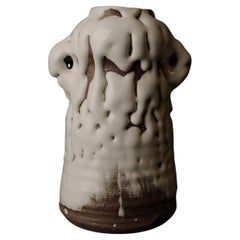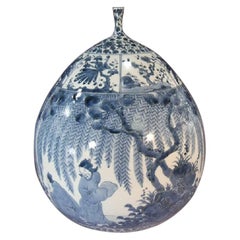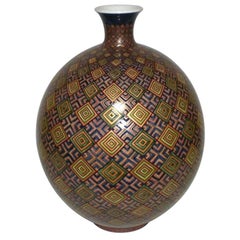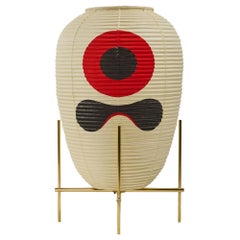Japan - Asian Art and Furniture
21st Century and Contemporary Japanese Japan - Asian Art and Furniture
Ceramic
21st Century and Contemporary Japanese Meiji Japan - Asian Art and Furniture
Porcelain
21st Century and Contemporary Japanese Japan - Asian Art and Furniture
Gold
Late 19th Century Japanese Edo Antique Japan - Asian Art and Furniture
Pottery
20th Century Japanese Showa Japan - Asian Art and Furniture
Bronze
2010s Japanese Edo Japan - Asian Art and Furniture
Brass
Late 19th Century Japanese Ming Antique Japan - Asian Art and Furniture
Silk
19th Century Japanese Antique Japan - Asian Art and Furniture
Paper
Late 19th Century Japanese Meiji Antique Japan - Asian Art and Furniture
Wood, Cedar
1910s Japanese Taisho Vintage Japan - Asian Art and Furniture
Wood, Silk
Early 20th Century Japanese Taisho Japan - Asian Art and Furniture
Gold
20th Century Japanese Showa Japan - Asian Art and Furniture
Stone
Early 20th Century Japanese Taisho Japan - Asian Art and Furniture
Wood
Mid-19th Century Japanese Edo Antique Japan - Asian Art and Furniture
Cedar
Mid-20th Century Japanese Japan - Asian Art and Furniture
Wood
19th Century Japanese Edo Antique Japan - Asian Art and Furniture
Copper
Early 20th Century Japanese Folk Art Japan - Asian Art and Furniture
Cypress
21st Century and Contemporary Japanese Japan - Asian Art and Furniture
Ceramic, Clay
Late 17th Century Japanese Edo Antique Japan - Asian Art and Furniture
Wood, Lacquer
20th Century Japanese Rustic Japan - Asian Art and Furniture
Wood, Hardwood
19th Century Japanese Edo Antique Japan - Asian Art and Furniture
Wood
19th Century Japanese Antique Japan - Asian Art and Furniture
Paper
20th Century Japanese Showa Japan - Asian Art and Furniture
Limestone
Early 20th Century Japanese Japan - Asian Art and Furniture
Paper
Early 20th Century Meiji Japan - Asian Art and Furniture
Wood
21st Century and Contemporary Japanese Japan - Asian Art and Furniture
Ceramic, Clay
Late 19th Century Korean Edo Antique Japan - Asian Art and Furniture
Paper
Early 20th Century Taisho Japan - Asian Art and Furniture
Wood
19th Century Japanese Antique Japan - Asian Art and Furniture
Paper
Early 20th Century Japanese Meiji Japan - Asian Art and Furniture
Wood
Early 20th Century Taisho Japan - Asian Art and Furniture
Wood
19th Century Japanese Edo Antique Japan - Asian Art and Furniture
Cypress
Early 20th Century Japanese Meiji Japan - Asian Art and Furniture
Wood
18th Century Japanese Antique Japan - Asian Art and Furniture
Iron
Early 1900s Japanese Meiji Antique Japan - Asian Art and Furniture
Gold
Early 20th Century Japanese Japan - Asian Art and Furniture
Cotton
20th Century Southeast Asian Other Japan - Asian Art and Furniture
Wood
Early 20th Century Meiji Japan - Asian Art and Furniture
Wood
20th Century Japanese Japan - Asian Art and Furniture
Paper
Late 19th Century Japanese Edo Antique Japan - Asian Art and Furniture
Wood
Early 17th Century Japanese Edo Antique Japan - Asian Art and Furniture
Porcelain
Mid-20th Century Japanese Showa Japan - Asian Art and Furniture
Tin
1860s Japanese Edo Antique Japan - Asian Art and Furniture
Silk
Early 20th Century Japanese Meiji Japan - Asian Art and Furniture
Wood, Bamboo
1690s Japanese Edo Antique Japan - Asian Art and Furniture
Gold Leaf
20th Century Japanese Showa Japan - Asian Art and Furniture
Wood
1960s Japanese Mid-Century Modern Vintage Japan - Asian Art and Furniture
Teak, Plywood
Early 18th Century Japanese Other Antique Japan - Asian Art and Furniture
Stone
Early 20th Century Japanese Taisho Japan - Asian Art and Furniture
Wood
1920s Japanese Taisho Vintage Japan - Asian Art and Furniture
Wood, Silk
Late 19th Century Japanese Antique Japan - Asian Art and Furniture
Wood
Early 20th Century Japanese Taisho Japan - Asian Art and Furniture
Wood
20th Century Japanese Showa Japan - Asian Art and Furniture
Wood
Late 17th Century Japanese Edo Antique Japan - Asian Art and Furniture
Gold Leaf
20th Century Congolese Other Japan - Asian Art and Furniture
Other
Early 20th Century Japanese Taisho Japan - Asian Art and Furniture
Wood
19th Century Japanese Edo Antique Japan - Asian Art and Furniture
Bronze
Early 20th Century Japanese Taisho Japan - Asian Art and Furniture
Wood
20th Century Japanese Japan - Asian Art and Furniture
Paper
1920s Japanese Taisho Vintage Japan - Asian Art and Furniture
Wood, Silk
Read More
Symbols of Happiness and Rebirth Adorn This Japanese Satsuma Bowl
Decorated with white cranes and the sought-after thousand-butterflies motif, the Meiji-period vessel offers both a celebration of traditional aesthetics and a clear reflection of the era’s appetite for exquisite export pieces.
Chicago’s Pagoda Red Has a Spirited Mix of Asian Antiques and Bold New Art
For 25 years, gallerist Betsy Nathan has leveraged her keen eye and key connections to bring a unique selection of rare finds to the market.
In L.A., Gallerist JF Chen Has Long Championed Eclectic Blue-Chip Design
Now working alongside his daughter Bianca, dealer Joel Chen has presented a most covetable array of antiques, art and contemporary creations for more than 40 years.
12 Calming Spaces Inspired by Japanese Design
From cherry-blossom-adorned walls paired with glamorous lighting to wood-paneled ceilings above checkerboard-patterned chairs, these 12 spaces seamlessly blend Eastern and Western aesthetics.
Rodrigo Rivero Lake’s Mexico City Showroom Is a Museum-Worthy Trove of Spanish Colonial and Asian Antiques
The dealer and curator has spent the past 50 years amassing a collection of exceptional art, furniture and architectural elements that trace the cultural influence of the Spanish empire from Europe to the Americas and beyond.
16 Refined Asian-Inspired Interiors
These spaces exemplify how Eastern elements elevate a home's decor.



![katakuchi meaning Japanese antique pottery bowl/[Banko ware] Mie prefecture/1850-1912](https://a.1stdibscdn.com/japanese-antique-pottery-bowl-banko-ware-mie-prefecture-1850-1912-for-sale/1121189/f_319674221672470538196/31967422_datamatics.jpg?width=240)

